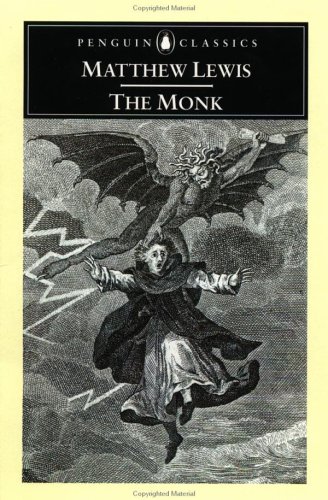Origins of Horror Films Part 2
I want to highlight the significance of horror literature in the development of Horror Cinema (Horror Films, Horror Movies). In the first part I highlighted the importance of religious texts, mythology and fairy tales on the development of horror literature gender.
The Age of Enlightenment
During the Age of Enlightenment (eighteen century) the horror literature gender gained the recognition as an autonomous and independent gender.
Ann Radcliffe
The Wallpole’s approach can be found also in five novel’s of Ann Radcliffe and developed the Gothic Horror Romance even more. The cornstone of the Entire gender was established by Ann Radcliffe in her’s masterpiece “The Italian” (1797). Almost in all books of Ann Radcliffe the main characters are beautiful, virtuous heroines and a male tyrant, the plot line of the book is developed as conflict between them.
Matthew Lewis (M.G. Lewis) and Horror Literature (Origins of Horror Movies)
M.G. Lewis is also an important ambassador of the Age of Enlightenment’s wave of fantasy and horror writing. In his work “The Monk” (1795) he develops the story of a preacher who became slave of sin (sexual depravity). The Monk is a fundamental novel of the gender. M.G. Lewis highligts on his work the extreme psychological struggles of his protagonist.
Charles Maturin and Horror Literature (Corn-stones of Horror Movies)
The work of Charles Maturin’s “Melmoth the Wanderer” (1820) like Faust is about the bargain of a man with Satan to extant his life.
Mary Shelley and Horror Literature (Millstones of Horror Movies)
The milestone year of the gender is the 1818, when Mary Shelley published her’s masterpiece and all time classic horror literature book “Frankenstein, or, The modern Prometheus”.
Frankestain is a brilliant work about the demonic ambitious of scientist and the nature’s power-full - terrible revenge. Mary Shelley was member of the Romantioc movement, a school of thought according to which the Universe could not be understood in purely rational terms.
E.T.A. Hoffmann and Horror Literature (Inspiration for Horror Movies)
In Germany ET Hoffman published in 1816 “The Sandman” a story about a young man a who can not free himself from the memory of a traumatic childhood.
Sigmund Freud move the story of “The Sandman” into the core of an influential essay in which he defined the uncanny as defining its terror “.... not from something extreme alien or unknown - but on the contrary - from something strangely familiar which defeats our efforts to separate ourselves from it”.
The Sandman had an enormous influence on the horror gender. It’s believed that Hoffman’s work influenced the humor of Nikolai Gogol’s (Diary of the madman - 1835) and another American writers like Washington Irving (The Sketch Book of Goeffrey Canyon - 1819), and Nathaniel Harthorne (Twice Told Tales - 1837) and Edgar Allan Poe (The Murders in the rue Morgue - 1841).
To be continued
Elias Stoikos
Relatice Articles
Horror Films Part 1
Horror Films Part 3
Horror Films Part 4
Horror Films Part 5
Special Resources for this article
Online Edition of the Italian
Bibliography
Horror Films Part 1
Horror Films Part 3
Horror Films Part 4
Horror Films Part 5
Special Resources for this article
Online Edition of the Italian
Bibliography
3. Fangoria's 101 Best Horror Movies you have never seen : A celebration
of the world's most unheralded fright flicks (Adam Lukerman)
Online Resources





Δεν υπάρχουν σχόλια:
Δημοσίευση σχολίου